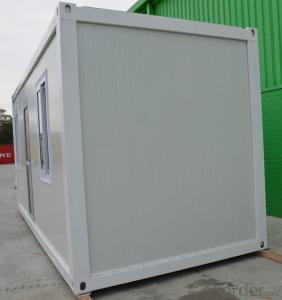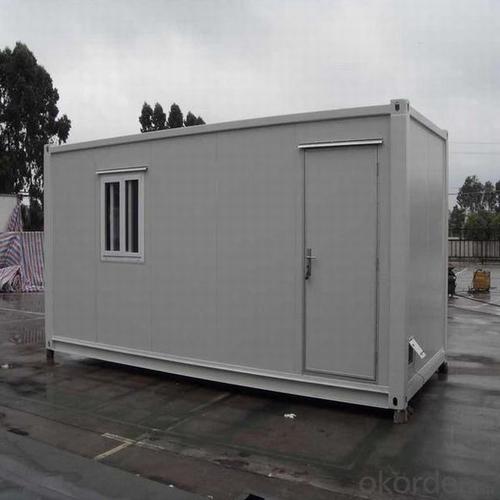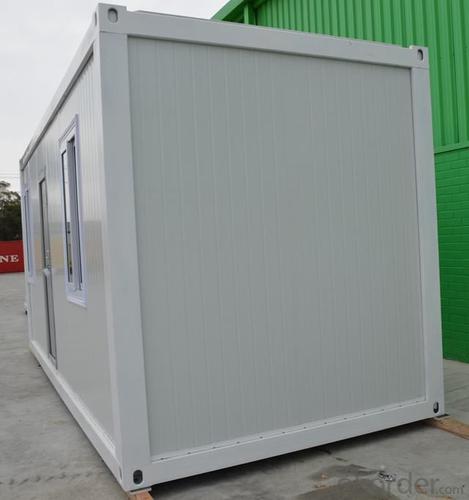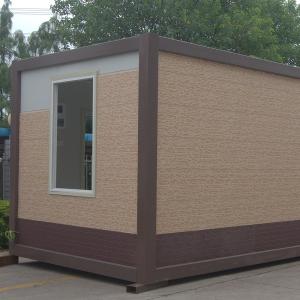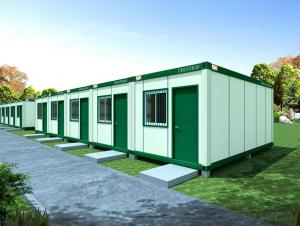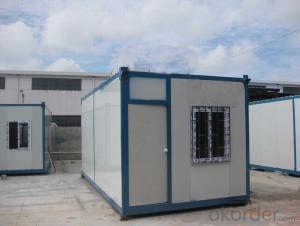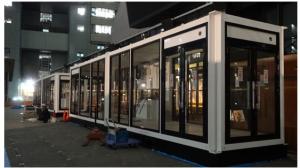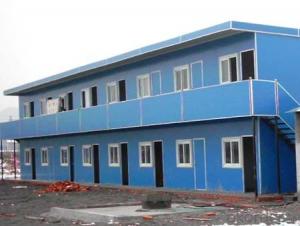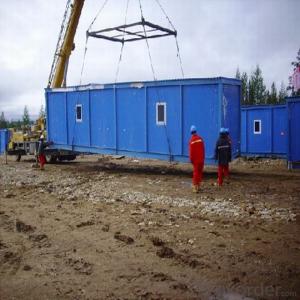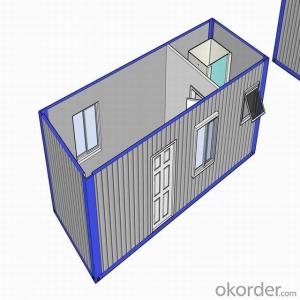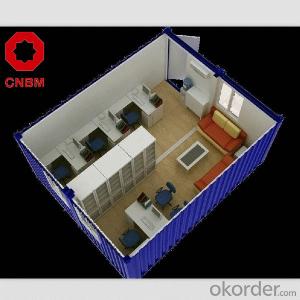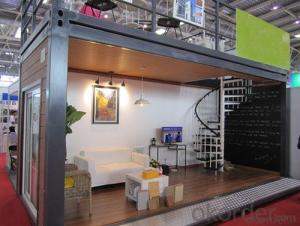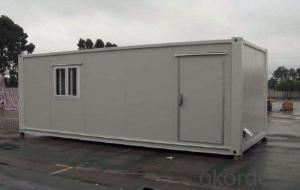Good Quality Container House
- Loading Port:
- China Main Port
- Payment Terms:
- TT OR LC
- Min Order Qty:
- -
- Supply Capability:
- -
OKorder Service Pledge
OKorder Financial Service
You Might Also Like
Description:
The steel structure is strong and firm, wind resistance capacity>220-280km / h, seismic resistance capacity >grade 8. Completed galvanized steel frame, anti-rust and especially for seaside and high humidity area. Time and Labor saving and Easy assembly: Two skilled workers can finish assembling one standard unit within 3 hours Flexible combination: Multiple modular buildings can be easily combined horizontally and vertically. Wide applications: Can be used as warehouse, home, villa, toilet, shower, shop, hotel, camp, workshop, office, hospital etc. Cost-effective and Easy transportation way: 8 units / 40’HQ loading High mobility: Completed lifting and easy to move from one site to another site. |
Specifications:
Size:
Material List:
| ||||||||||||||||||||||
Applications:
|
Competitive Advantage:
|
company profile
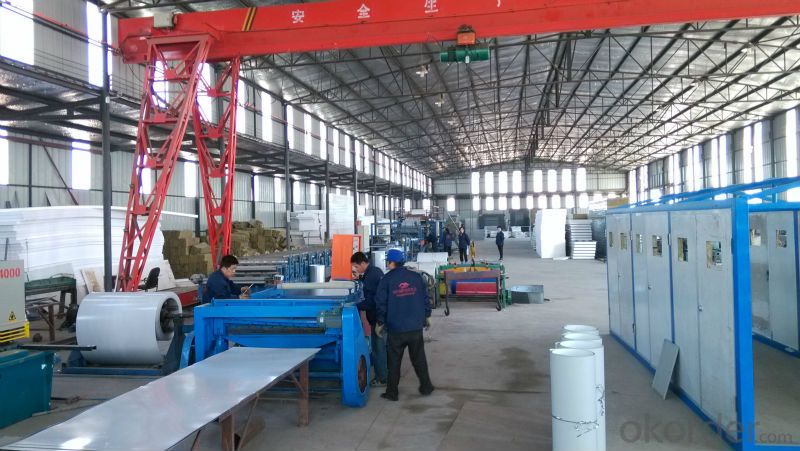
- Q: Can container houses be designed with a pet-friendly space?
- Yes, container houses can definitely be designed with a pet-friendly space. With careful planning and consideration, the layout and design of a container house can incorporate features that cater to the needs of pets. This may include designated play areas, built-in pet beds or crates, easy-to-clean surfaces, and access to outdoor spaces suitable for pets. It is important to prioritize the comfort, safety, and well-being of pets when designing a container house.
- Q: Can container houses be soundproofed?
- Yes, container houses can be soundproofed. While shipping containers are not originally designed to be soundproof, there are several methods and techniques that can be applied to make them more acoustically insulated. One common approach is to add insulation materials such as fiberglass or mineral wool inside the walls, floors, and ceilings of the container. These materials help to absorb and reduce sound transmission, making the container more soundproof. Additionally, sealing any gaps or openings in the container's structure can also help in preventing sound leaks. Another effective method is to install double-pane or laminated glass windows, which are designed to reduce sound transmission. These windows have a layer of air or sound-absorbing material in between the glass panes, creating a barrier against noise. Moreover, adding acoustically rated doors with weatherstripping can further enhance the soundproofing of container houses. These doors are specially designed to minimize sound transfer and can be equipped with seals to prevent sound leaks. It is important to note that while these soundproofing techniques can significantly reduce noise, achieving complete soundproofing may be challenging. Soundproofing measures can vary depending on the desired level of insulation, the specific container structure, and the surrounding environment. Consulting with professionals or acoustic engineers can help in determining the most effective soundproofing solutions for container houses.
- Q: Are container houses suitable for areas with strict HOA regulations?
- Container houses may pose challenges in areas with strict HOA regulations as they may not conform to the traditional aesthetic standards set by the HOA. However, it ultimately depends on the specific rules and guidelines of the HOA and their willingness to consider alternative housing options.
- Q: Are container houses suitable for college student housing?
- Container houses can be a suitable option for college student housing for several reasons. Firstly, container houses are affordable and cost-effective compared to traditional housing options. College students often have limited budgets, and container houses offer a more economical alternative that can help ease the financial burden. Secondly, container houses are portable and can be easily moved to different locations. This flexibility is especially beneficial for college students who frequently change their living arrangements, such as moving between semesters or studying abroad. The ability to transport container houses ensures that students can have a stable and comfortable living space no matter where they are studying. Furthermore, container houses can be customized and designed to accommodate the specific needs of college students. They can be divided into separate rooms or shared spaces, providing students with privacy and a sense of personal space. Additionally, container houses can be equipped with essential amenities like electricity, heating, and plumbing, ensuring that students have a comfortable living environment. Another advantage of container houses for college student housing is their sustainability. These houses are often made from recycled materials, reducing the environmental impact and promoting eco-friendly living. This can resonate well with college students who are increasingly conscious about their carbon footprint and want to live in a more sustainable manner. However, it is important to consider a few factors before deciding if container houses are suitable for college student housing. The size of the container may be limited, and it may not have enough space to accommodate large groups of students. Additionally, the availability of land or suitable locations to place container houses near college campuses may be a challenge. In conclusion, container houses can be a suitable option for college student housing due to their affordability, portability, customization options, and sustainability. However, it is important to carefully consider the specific needs and circumstances of college students before implementing container houses as a housing solution.
- Q: Can container houses be designed for solar power?
- Solar power can definitely be incorporated into the design of container houses. In fact, container houses are well-suited for solar power systems due to their modular design and flat roofs. Installing solar panels on the roof of a container house is easy and maximizes exposure to sunlight. Different types of solar power systems, such as photovoltaic (PV) panels or solar thermal collectors, can be integrated into container houses. PV panels convert sunlight into electricity, while solar thermal collectors utilize the sun's heat for hot water or space heating. Both systems can be incorporated into container houses, providing renewable and clean energy for various purposes. The compact size of container houses makes them ideal for off-grid living or remote locations with limited access to the power grid. By installing enough solar panels and utilizing energy storage solutions, container houses can become self-sufficient and independent from traditional power sources. Furthermore, container houses can be designed to optimize energy efficiency, which enhances the benefits of solar power. Proper insulation, energy-efficient windows, and efficient appliances reduce energy consumption, making it easier for solar power systems to meet the residents' energy needs. In conclusion, container houses can be intelligently designed to incorporate solar power systems, making them more sustainable, environmentally friendly, and even self-sufficient in terms of energy.
- Q: Can container houses be stacked on top of each other?
- Indeed, container houses have the capability to be stacked atop one another. The modular design of container houses is a key advantage, facilitating their effortless stacking and amalgamation into multi-story edifices. Shipping containers' consistent shape and size make them an ideal choice for stacking, as they can be firmly connected and reinforced to guarantee structural integrity. The stacking of container houses also offers supplementary space and adaptability, rendering them a favored option for various applications like apartment buildings, hotels, and even office complexes. However, it is vital to emphasize that the implementation of appropriate engineering and construction techniques is imperative to ensure the safety and stability of stacked container houses.
- Q: Can container houses be designed with a small footprint?
- Yes, container houses can definitely be designed with a small footprint. In fact, one of the major advantages of using shipping containers as building units is their ability to be stacked and arranged in various configurations, maximizing the use of limited space. By designing container houses with a small footprint, we can ensure that they occupy minimal land area, making them ideal for urban environments or areas with limited space availability. To achieve a small footprint, several design strategies can be employed. Firstly, containers can be stacked vertically instead of horizontally, allowing for multi-level structures that utilize the vertical space efficiently. Additionally, modular container units can be interconnected, creating compact structures that can be expanded or modified as needed. Another way to reduce the footprint is by incorporating space-saving features and smart design elements. This includes utilizing open floor plans, multi-purpose furniture, and maximizing natural light and ventilation to reduce the need for excessive energy consumption. By carefully considering the layout and organization of the container house, we can ensure that every inch of space is utilized effectively. Furthermore, container houses can be designed with sustainable features that reduce their environmental impact. This can include incorporating solar panels for energy generation, rainwater harvesting systems, and utilizing eco-friendly materials for construction. By focusing on sustainability, we not only reduce the carbon footprint of the container house but also promote a more environmentally friendly lifestyle. In conclusion, container houses can indeed be designed with a small footprint by utilizing vertical stacking, modular construction, space-saving features, and sustainable design elements. These houses offer a practical solution for maximizing space efficiency while reducing environmental impact, making them a viable option for those seeking compact and eco-friendly housing solutions.
- Q: Are container houses suitable for outdoor education or wilderness retreats?
- Yes, container houses are suitable for outdoor education or wilderness retreats. Container houses are highly versatile and can be easily transported and set up in remote locations. They provide a comfortable and functional living space for participants of outdoor education programs or retreats. Container houses are designed to withstand harsh weather conditions, making them ideal for wilderness environments. They are made of durable materials that can withstand extreme temperatures, heavy rain, and strong winds. This ensures the safety and comfort of the individuals staying in them, even in remote and rugged locations. Furthermore, container houses can be customized to meet the specific needs of outdoor education or retreat programs. They can be equipped with necessary amenities such as bathrooms, kitchens, and sleeping areas. The interior can also be designed to create a cozy and inviting atmosphere, promoting relaxation and connection with nature. Container houses are also sustainable and environmentally friendly. Many container houses are made from recycled shipping containers, reducing waste and promoting eco-consciousness. They can also be equipped with renewable energy sources like solar panels, further reducing their environmental impact. Moreover, container houses can be easily expanded or modified to accommodate different group sizes or program requirements. They can be connected to create larger living spaces or separated into smaller units for individual accommodations. This flexibility allows for scalability and adaptability, making container houses suitable for a variety of outdoor education or retreat programs. In conclusion, container houses are a suitable and practical option for outdoor education or wilderness retreats. They offer durability, versatility, sustainability, and comfort, making them an excellent choice for those seeking to provide a unique and memorable experience in nature.
- Q: What is a simple container?
- Container container (container simple room), also known as container room, container housing, container housing, refers to the main container-based material slightly modified into a window with a house
- Q: Can container houses be easily modified or remodeled?
- Yes, container houses can be easily modified or remodeled due to their modular nature. The ability to stack, interlock, and dismantle containers provides flexibility in design changes or expansions. Additionally, their steel structure allows for easy cutting and welding, enabling modifications such as adding windows, doors, or partitions.
Send your message to us
Good Quality Container House
- Loading Port:
- China Main Port
- Payment Terms:
- TT OR LC
- Min Order Qty:
- -
- Supply Capability:
- -
OKorder Service Pledge
OKorder Financial Service
Similar products
Hot products
Hot Searches
Related keywords

